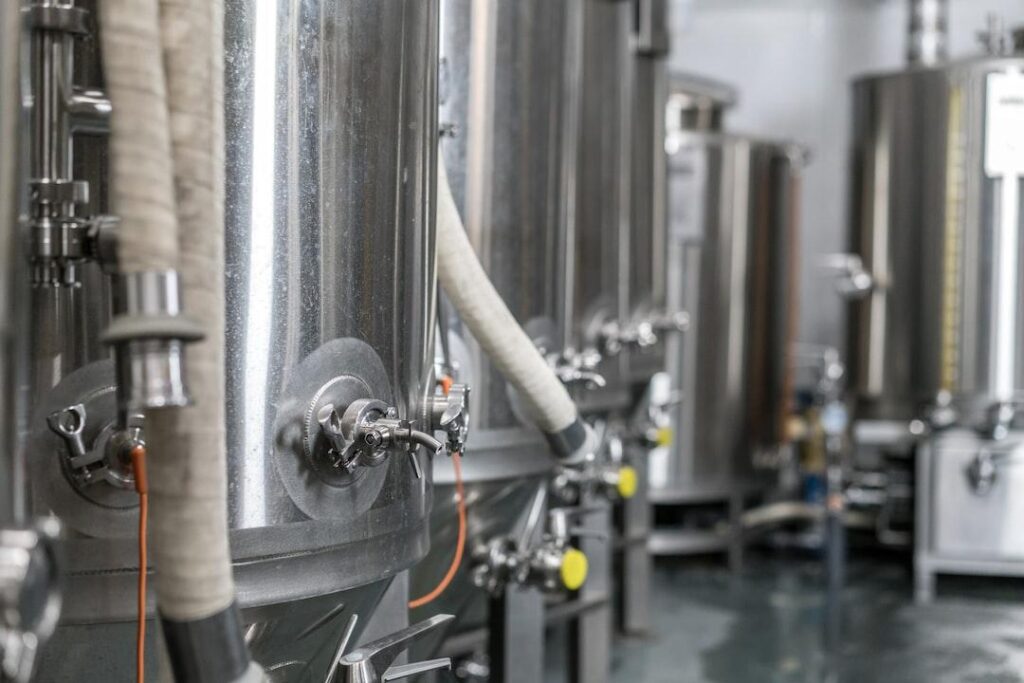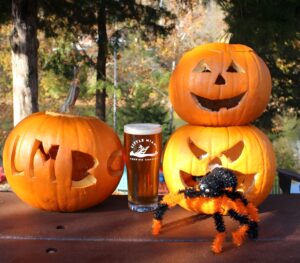At Little Miami Brewing Company beermaking isn’t really magic. It’s a precise science, and yeast is a crucial element in the process. In this article, we’ll break down the role of yeast fermentation in beer, with a step-by-step guide to show you how world-class brewers create your favorite beers.
The Role of Yeast in Beer Production
Beer starts out as a precise mix of grains and water. This combination creates a sugary liquid, or wort. The next step in the process is fermentation — and that’s where yeast comes in.
Yeast is a microscopic single-cell organism that eats sugar, creating alcohol fermentation. Every beer uses sugar and yeast to create that funky flavor we all know and love. However, the type of beer-making yeast used will ultimately affect the taste, color, and alcohol content of the beer.
A few of the most common yeasts for brewing include:
- Ale yeast. This type of “top-fermenting” yeast rises during fermentation, creating a thick foam on the top of the brewing beer. Ale yeast, also called saccharomyces yeast, is used to brew ales, stouts, wheat beers, and porters.
- Lager yeast. Lager, or “bottom-fermenting” yeast sinks to the bottom of the fermenter. This type of yeast is used for brewing in colder temperatures and creates lagers, pilsners, and other strong, flavor-forward beers.
- Wild yeast. Arguably the trickiest yeast species, wild yeast is derived from the environment in the brewery. It can be introduced intentionally, creating beers like a lambic or sour ale, or it can contaminate a beer when accidentally introduced.
The function of yeast in beer can’t be understated. It might sound weird, but yeast fermentation is a crucial element in every brewer’s process. Understanding yeast is the key to understanding how beer is made.
The 7 Steps Involved in Fermenting Beers
Beer processing looks a little different in every brewery. Each type of beer requires its own tweaks and ingredients. However, the key elements are always the same: glucose metabolized by yeast creates beer. Whether you’re brewing beer at home or in a professional brewery, the same steps apply.
Here are seven basic steps every brewer takes to turn hops and water into beer.
1. Mix the Ingredients
The first step is to mix and mash the basic ingredients. This is done in a mash turn, or large, sterile vessel. The ingredients in this stage are simple: hot water, yeast, and grains, typically barley and hops.
Brewers stir the mash as it heats to ensure even saturation. This begins the breakdown of starches into sugars so the yeast enzymes can do their job.
3. Lautering
Next, the mash is separated into wort and spent grain. This process is known as lautering. Using a lauter turn or mash filter, brewers separate the solid grain from the liquid wort.
The liquid portion is what eventually becomes beer. Many brewers upcycle their spent grain by composting it or using it to feed livestock, but they don’t need it for the rest of the brewing process.
3. Boil and Then Cool the Wort
Wort is a clear, sugary liquid that will fuel the fermentation process. After separating out the spent grain, the brewers boil the wort in a brew kettle, often with additional hops. This is an important step — boiling the wort gives the products of fermentation their strong, bitter flavor.
After boiling, the wort has to cool to a safe temperature before you can add the proper strain of brewers’ yeast.
4. Add the Proper Yeast Strain
The next step is to add the right yeast strain to the cooled wort. This stage determines what kind of beer you’re brewing. Different yeast cells create different beer styles. For example, ales are brewed with top-fermenting yeasts, lagers are brewed with bottom-fermenting yeasts, and sour beers can be made with wild yeasts.
5. Transfer the Mixture to a Fermentation Vessel
Now for the fun part: fermentation. This happens when the yeast cells break down sugars in the wort, producing alcohol and carbon dioxide. The purpose of fermentation isn’t just to make a drink alcoholic — it also adds flavor and fizziness to the liquid.
After combining the yeast and wort, the brewer transfers the mixture to a large fermentation vessel. This tank is kept at a consistent fermentation temperature throughout the process. Then, it’s just a matter of time. Fermentation can take anywhere from a few days to a month, depending on the type of beer.
6. Transfer the Mixture to a Conditioning Tank
The final step in the brewing process is conditioning. In this stage, beer matures, acquiring its complex flavor and aroma.
Brewers transfer the fermented beer to a sterile conditioning tank, where it sits at a cool temperature for several weeks or even months. Any remaining solids or yeasts settle to the bottom of the tank as the beer conditions, leaving a clarified, smooth liquid.
7. Package the Beer in Cans or Barrels To Serve From Taps
As much as we’d all like to drink beer directly from the tank, that isn’t an option for most of us. The final product has to be packaged into bottles, cans, or kegs before it’s enjoyed.
At this stage, the beer has already been carbonated by the fermentation process. However, some brewers add additional CO2 for extra fizz. This is known as forced carbonation, and it’s what gives beer that lovely foamy head when served from a tap.
Discover Expertly Brewed Beers in Cincinnati
You can’t make beer without yeast fermentation. But that’s not all it takes — the brewing process always starts with creative, passionate people.
Are you passionate about beer? So are we. Little Miami Brewery is dedicated to brewing world-class beers, and we’re always working to improve our craft. Stop by our brewery in downtown Old Milford, Ohio to review our beers, grab a bite, and learn more about the beermaking process.




